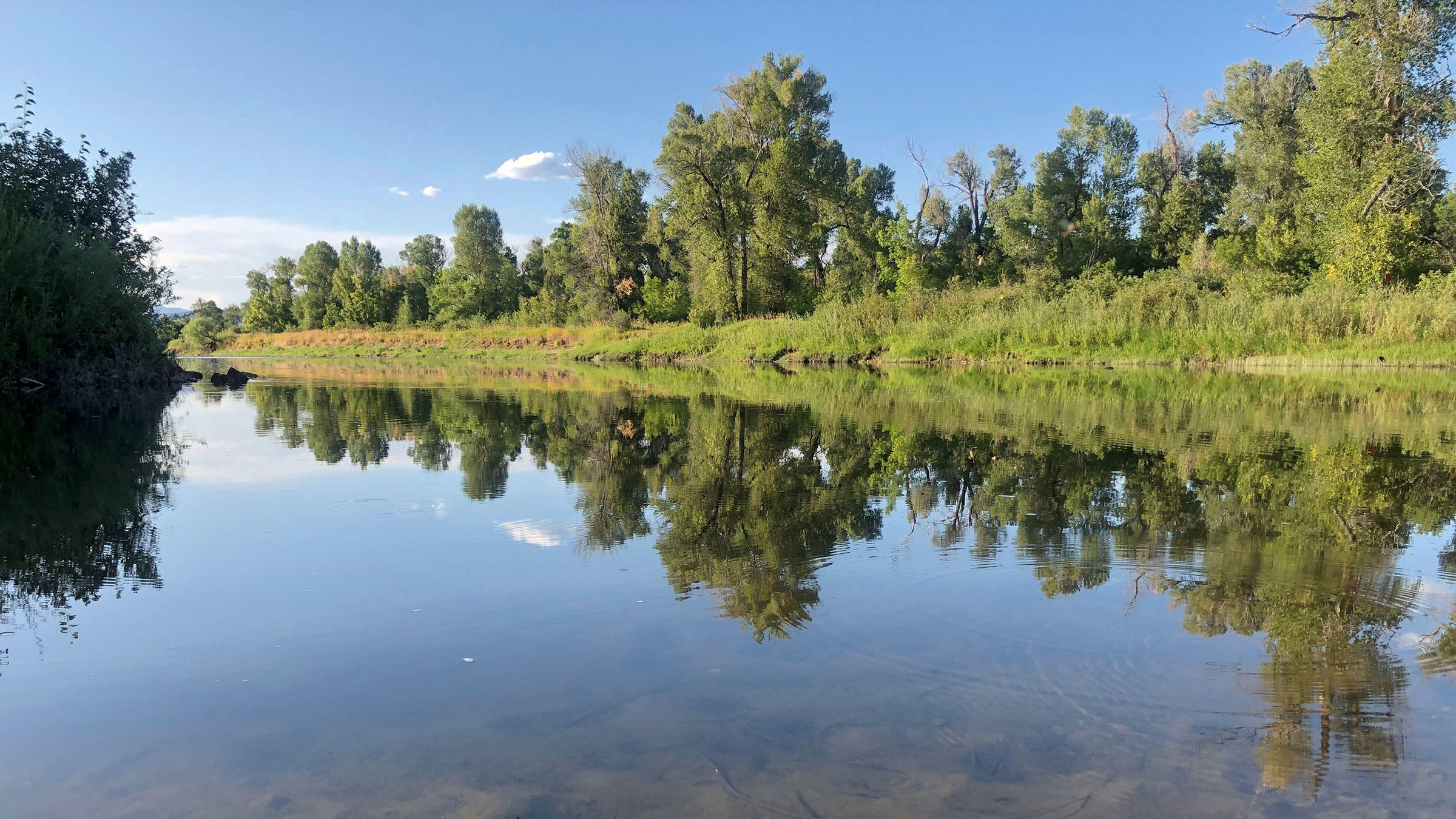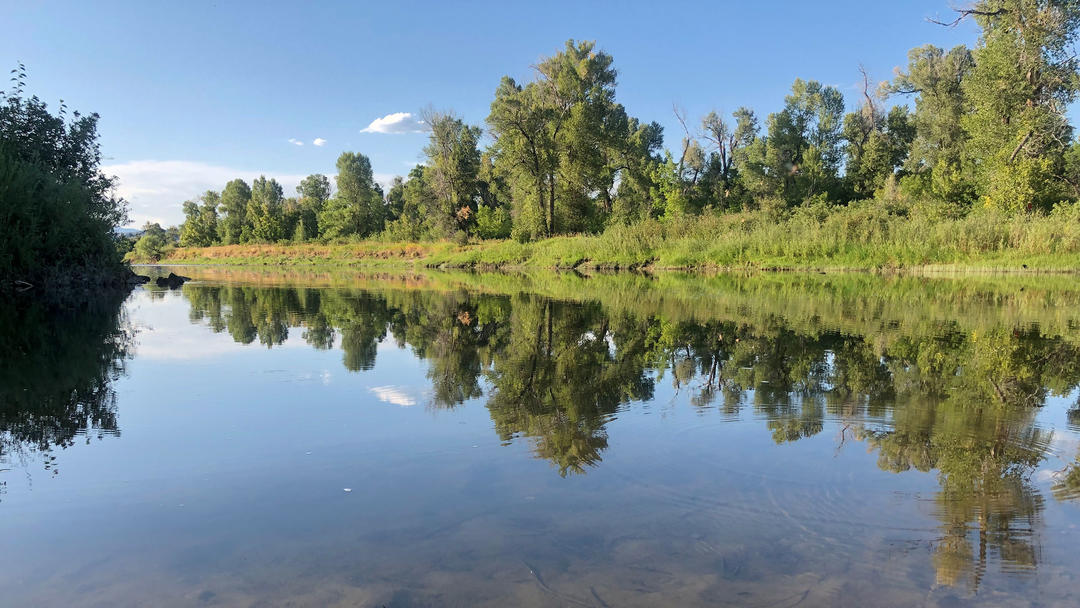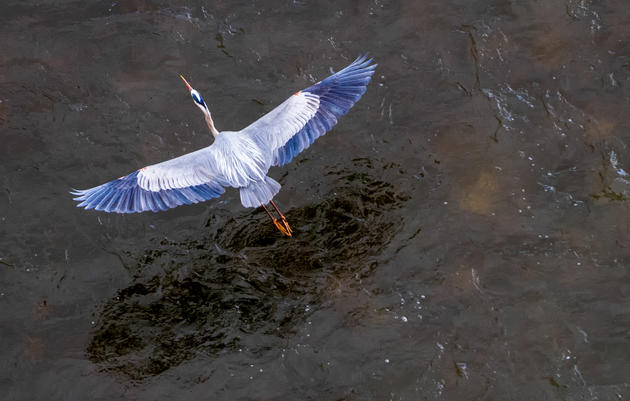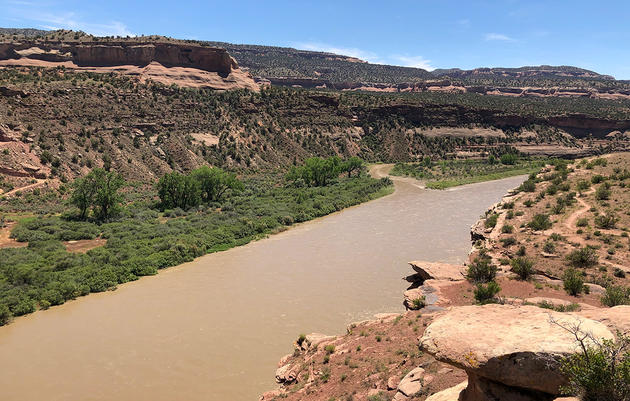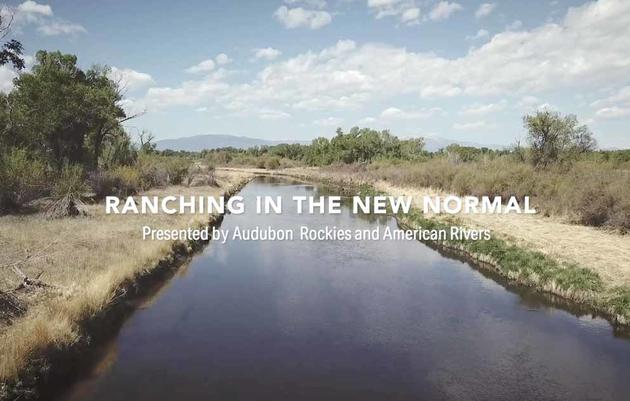The major reservoirs of the Colorado River, Lake Powell and Lake Mead, have been dropping since 2000. Climate change, overuse, and drought have pushed the Colorado River into uncertain territory. In order to avoid continuing risks to birds, habitat, and the people who depend on the Colorado River, we need to rebalance our use with available supply. The high snowpack in the Upper Colorado River basin buoyed levels in Lake Powell, but we are certainly not in the clear.
On August 15th the United States Bureau of Reclamation released its annual Colorado River 24-month study. The study informs operational plans for Lake Powell and Lake Mead based on inflows, outflows, and reservoir levels. The study projected that Lake Mead, which supplies water to the lower Colorado River states of Arizona, Nevada, and California, will enter 2020 less than one foot below a level that triggers pre-determined water use reductions in the Lower Basin.
The Drought Contingency Plans (DCP) signed this past spring are working. Because of the Lower Basin DCP agreement, the lower basin states of Arizona and Nevada are cutting back on Colorado River water use. Mexico will also reduce Colorado River water use. This is a big deal on the Colorado River!
Q: So what does the Bureau of Reclamation study mean for the Upper Colorado River basin states of Colorado, Wyoming, Utah, and New Mexico?
A: Not a lot. The Upper Basin states do not “have” to do anything—yet. But, the states are proactively investigating one element of the Upper Basin Drought Contingency Plan: demand management.
You may have heard about demand management in the news or at your local farmers market. Demand management is a concept whereby a water rights holder can be paid to temporarily reduce their water use without affecting the underlying water right. In the Upper Basin, the concept is that the saved water will eventually flow to Lake Powell, being stored in a separate savings account of up to 500,000 acre-feet. That saved water could be used, if necessary, to help the Upper Basin meet its obligations to the Lower Basin and avoid involuntary water cuts to a wide range of water users in the Upper Colorado River Basin.
The Upper Basin states are engaged at a variety of levels to investigate whether demand management within and between the states is even possible. There are a lot of questions to answer: How can demand management work within our water law systems? What does “voluntary” mean? What does “temporary” mean? Who’s going to pay for water and how much? How will agriculture and the environment be impacted or benefited? What opportunities could a well-designed program offer farmers and ranchers? Could demand management be a good tool to have at the ready for a climate change influenced future? What happens if we do not have demand management—buy and dry of agricultural lands, compact curtailment?
Fortunately, Colorado is out in front with demand management investigations. During the last month, the Colorado Water Conservation Board kicked off a statewide demand management work group process. Nine individual work groups are diving into the deeper questions related to law, policy, monitoring and verification, water rights, funding, education, outreach, agricultural impacts, and tribal interests considerations. Audubon is represented on the environmental considerations workgroup.
Work group meetings are open to the public and the public is welcome to engage. Remember, this is an investigation into the feasibility of demand management; demand management is not a done deal.
As one irrigator reportedly said, “this is rocket science.” Demand management investigations are not easy; they're complicated. Thankfully we have a collaborative process set up through Colorado’s Water Plan. And, this is Colorado. We do things the Colorado way: together. Informed, collaborative engagement is where the Audubon network shines. As Becky Mitchell, director of the Colorado Water Conservation Board and Upper Colorado River commissioner for Colorado, said at the Water Congress summer conference, “…all hands on deck…we must promote a balanced and sustainable Colorado River.”
For more information on Colorado’s demand management investigation and work group information, contact Abby Burk, western rivers regional program manager for Audubon Rockies, and visit the Colorado Water Conservation Board.

